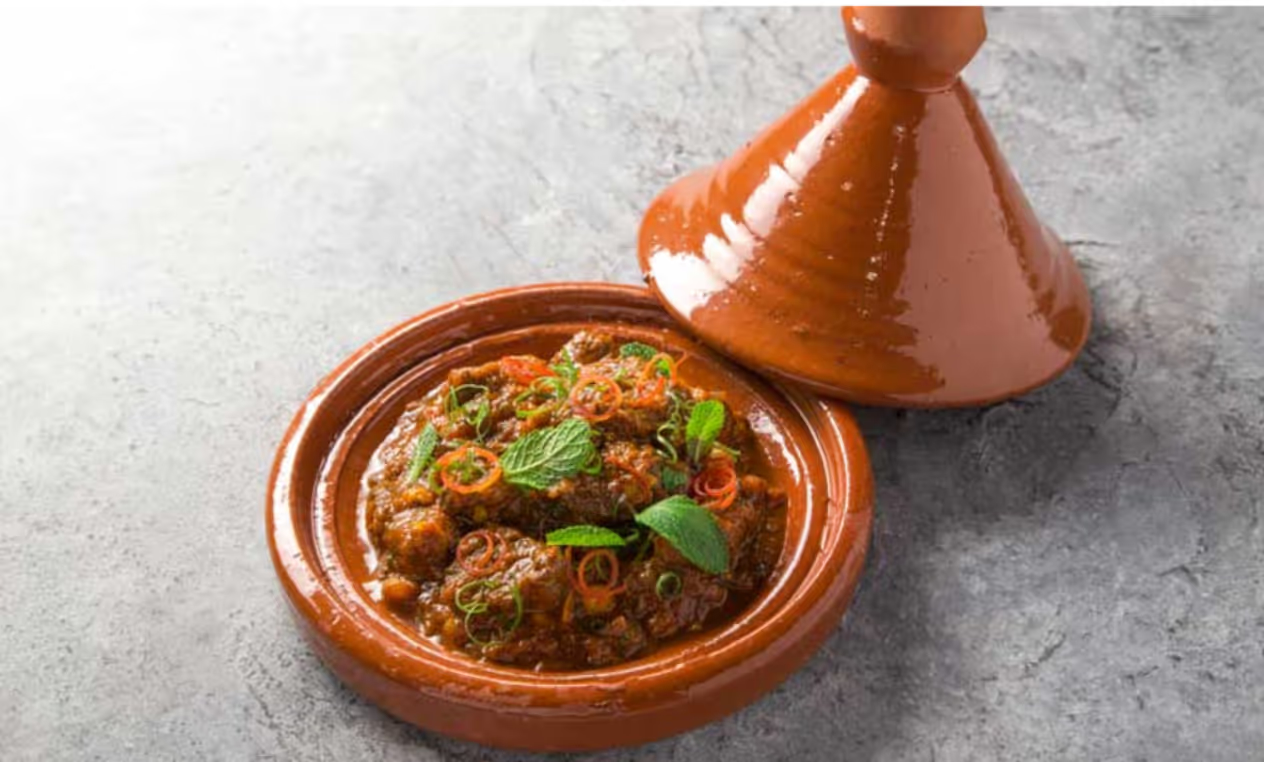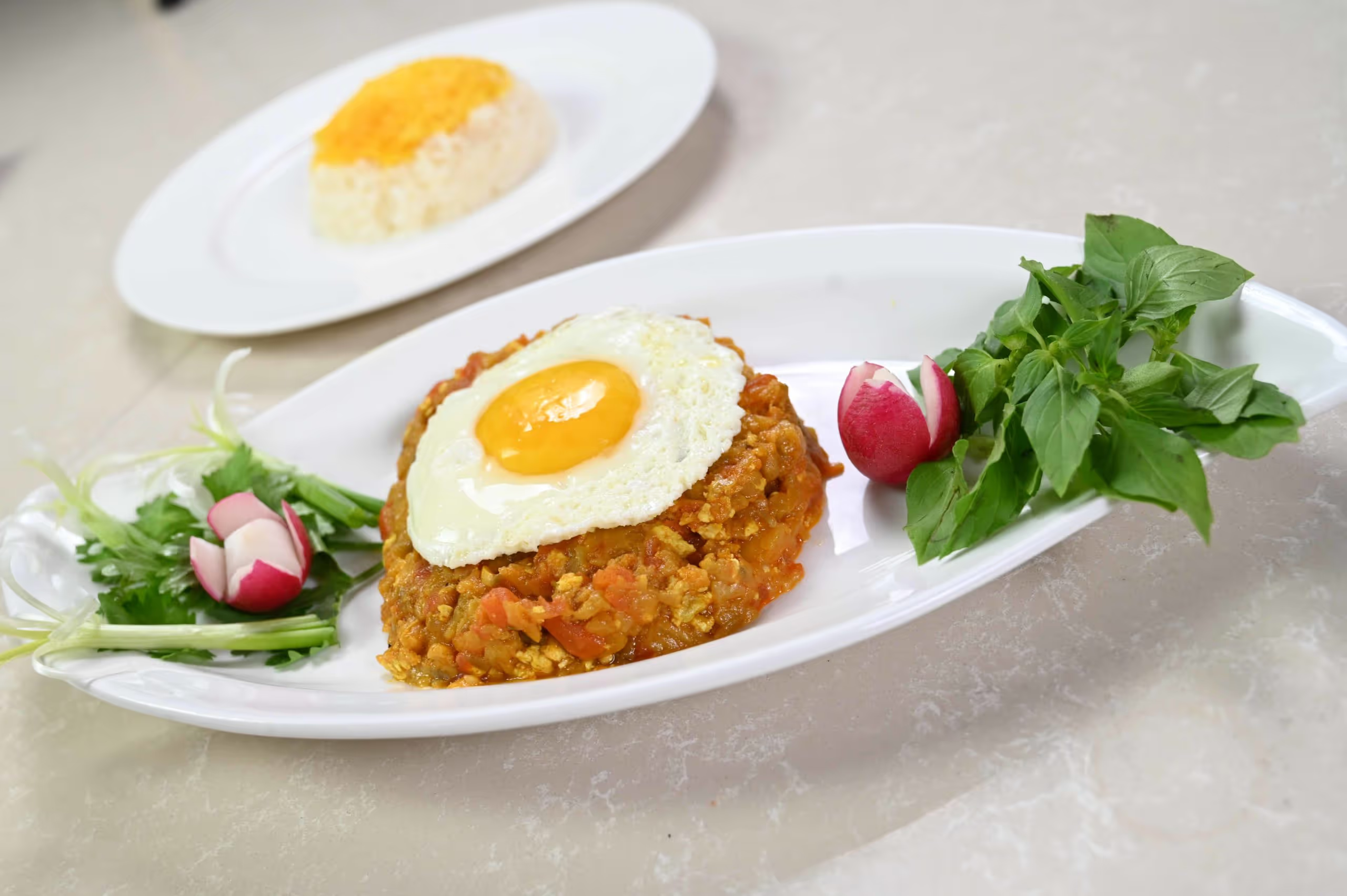Lamb chucks coated in a flavorful spice mix and slow-cooked in its juices until the meat is tender, directly served in a Tagine Pot with chopped herbs sprinkled on top.
Lamb is a young one of a sheep that is under one year old and known for its delicate and flavorful tender flesh.
The word lamb comes from the German word “lambiz”. Historically, it is believed that sheep were discovered somewhere in Central Asia, and used not only as a good source of food but their skin & wool for clothing. Sheep have since long been a dietary staple as well as a textile source in Asia, Europe, Australia, and New Zealand.
It is called a “Young Lamb” when slaughtered between 6 to 8 weeks; it has the palest meat of all. “Sprig” (which is also known as early or summer lamb) is lamb slaughtered between 3-5 months old. Lambs slaughtered between 1 to 2 years old are called “hoggart” and have a much stronger flavor and slightly less tender flesh. Anything above 2 years is called “Mutton”; although they are more flavorful, the meat is tougher and needs a slow cooking method to tenderize and cook well.
English cuts of Lamb have evolved through the centuries and reflect the change in cooking methods and taste in English homes.Here are some of the popular cuts of Lamb...
1. Cube Boneless
Cubed steak usually comes from the leg region and tends to be more tender than the diced shoulder. The cubes are usually cut to a thickness of 2.5cm/1 inch.
2. Boneless Rolled Leg
These are from the lower section of the leg, just below the knee. They can be ‘French Trimmed’ where the meat is scraped from part of the bone to make the shank look more pleasing.
3. Lamb Shanks
These are from the lower section of the leg, just below the knee. They can be ‘French Trimmed’ where the meat is scraped from part of the bone to make the shank look more pleasing.
4. The Saddle
This is from the loin area in the lumbar region and is made up of the loin from either side of the animal. You can either buy it with the bone in or with the bone removed.
5. The Loin Chop
This comes from one side of the lumbar area of the lamb known as the saddle and is almost an entire muscle. It contains a T-shaped bone, on one side is the loin muscle and the other is the tenderloin. These firm chops are taken from the rump of the lamb at the point where the top of the leg meets the loin. These chops are plump and generally lean.
6. A Rack of Lamb
This comes from the area considered to offer the most tender lamb cuts called the “best end of neck”.
7. Lamb Shoulder
This is from the forequarter of the lamb and as the name suggests comes from the shoulder area.
This can be from a variety of different cuts of lamb; the middle neck, scrag end, breast, or other forequarter offcuts. Lamb mince is perfect for dishes like shepherd’s pie, moussaka, burgers, and koftas.
Meat Recipe of the Day - Lamb Tagine

About Lamb Tagine
Tagine (in Arabic “ نجاط ”) is historically a cooking pot originating from North African “Berbers” and the dish is named after the pot it is cooked in, which is a unique clay earthen pot that has a wide, circular shallow bottom while the lid of the Tagine is shaped into a rounded cone, allowing food to be heaped into a peak, for cooking.
Tagine is a Moroccan signature dish that was traditionally cooked by placing the Tagine over coals. Now it is popularly used in the North African cuisines like Algerian and Tunisian.
Now the name Tagine also refers to the slow-cooked savory stew cooked in the Tagine which may vary from meat to chicken or fish along with fruits or vegetables, that is combined with a variety of spices such as saffron, ginger, turmeric, cinnamon or cumin.
This Dish
Lamb chucks coated in a flavorful spice mix and slow-cooked in its juices until the meat is tender, directly served in a Tagine Pot with chopped herbs sprinkled on top.
Recipe Card (to serve 4 pax)
Method of Cooking:
1. In a bowl add salt, cayenne, black pepper, paprika, ginger, turmeric, cinnamon and mix to combine.
2. Place the lamb in a large bowl and toss it with half of the spice mix. Cover and leave overnight in the fridge.
3. Preheat the oven to 150˚C.
4. In a sauce pan on medium heat, add 2 tbsp of olive oil. Add grated onion and the other half of the spice mix, lower heat and cook for 10 minutes until onions are soft. To this, add crushed garlic and cook for 3 minutes.
5. In a separate frying pan, heat the remaining oil and brown the cubes of lamb on all sides, then add the browned meat to sauce pan.
6. De-glaze the sauté pan with ¼ pint of tomato juice and add these juices to the sauce pan.
7. Add the remaining tomato juice, chopped tomatoes, apricots, reisins or sultanas, flaked almonds, saffron, lamb stock and honey to the casserole.
8. Bring to the boil, cover with a fitted lid, place in the oven and cook for 2-2½ hours or until the meat is meltingly tender.
9. Place the lamb in a Tagine or large serving dish, sprinkle the chopped herbs over it and serve.







.avif)


.avif)
.avif)